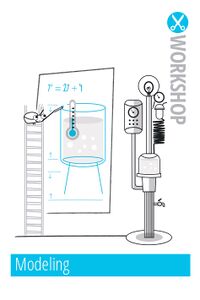Modeling: verschil tussen versies
(Nieuwe pagina aangemaakt met '=Why= To get a thorough understanding of the process. Mathematical models can form input for requirements, discussion with different stakeholders, and problem ana...') |
|||
| Regel 1: | Regel 1: | ||
| + | [[Bestand:Workshop_Modeling.jpg|200px|thumb|right|]] | ||
=Why= | =Why= | ||
Huidige versie van 16 dec 2019 om 08:42
Inhoud
Why
To get a thorough understanding of the process. Mathematical models can form input for requirements, discussion with different stakeholders, and problem analysis.
How
Make a simplified representation of a physical reality. Start with a sketch of a very simple model. Draw physical or logical subsystems and the signal paths, for example information, energy forces, or materials. Note down and solve the relevant equations. Add layers of complexity to the model and repeat the previous steps.
Ingredients
- A critical and mathematical mindset
- Understanding of essential process parameters
- Applicable mathematical tools.
- Modelling software
Practice
Modelling is used in all kinds of (research) projects. A model is used to get insights into what the process or system does or should do, regardless whether it is an existing process or something to be designed. The process or system to be designed is analysed according to the current state of technology.
